Bagan & Environs
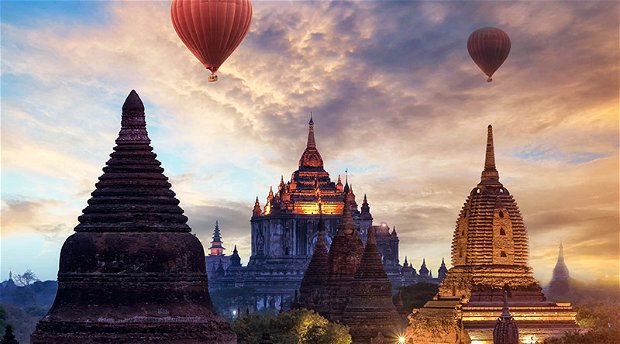
BAGAN
Bagan, one of the richest archaeological sites of South East Asia and UNESCO World Heritage Site, was the capital of Bagan Kingdom (First Myanmar Empire) between 9th to 13th centuries. It is located in the Mandalay Region of Myanmar and it is one of the most visited places by tourists in the country. Bagan has approximately 2000 ancient monuments and pagodas strewn all over Bagan. The monuments are located on the land between the river bank and the Turintaung range. Although Bagan is most famous for its historic monuments, it has a lot more to offer. Tourists can visit nearby local villages and watch people weaving cotton. Bagan is famous for ancient craft, especially in lacquer. It is also famous for its mural painting, oil processing and palm sugar production.
ATTRACTION PLACES TO VISIT
ANANDA TEMPLE
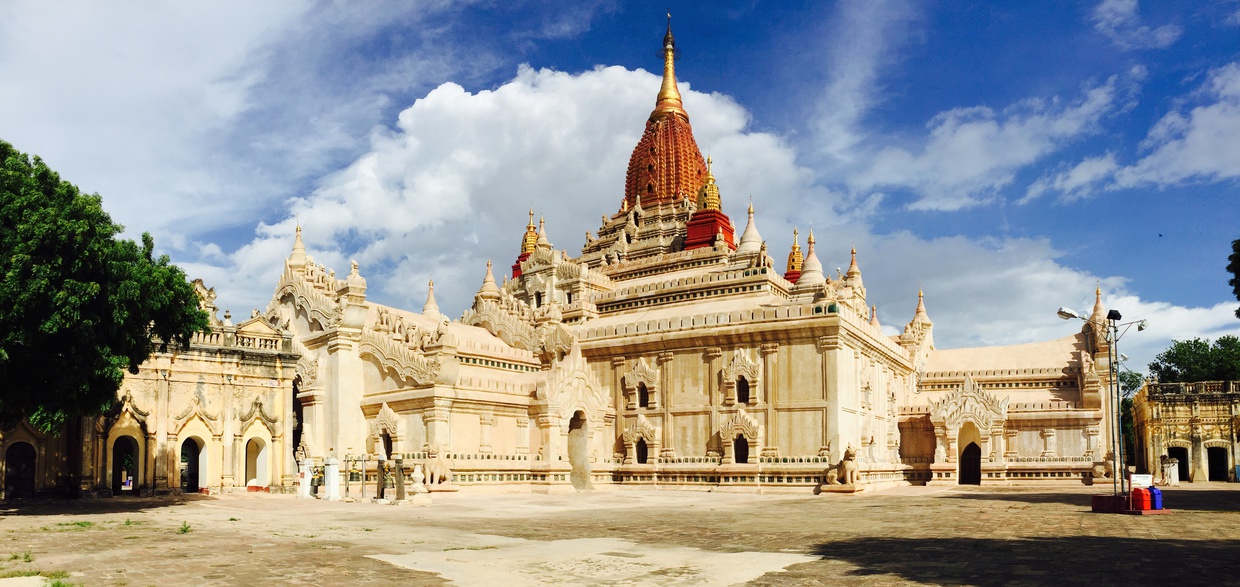
Ananda Temple is one of the Bagan’s best known, most beautiful temples and one of the four main temples remaining in Bagan. It is situated to the south-east of Tharaba Gate, the only gate remaining of the original 12 in the old Bagan city walls. It was built by King Kyansittha in 1091 A.D. Ananda temple is considered to be one of the most surviving masterpieces of the Mon Architecture. Also known as the finest, largest, best preserved and most revered of the Bagan Temples. There are four huge standing Buddha images, each 10 meters high inside the temple and 80 relics depicting the life of Buddha from his birth to his enlightenment.
SHWEZIGONE PAGODA
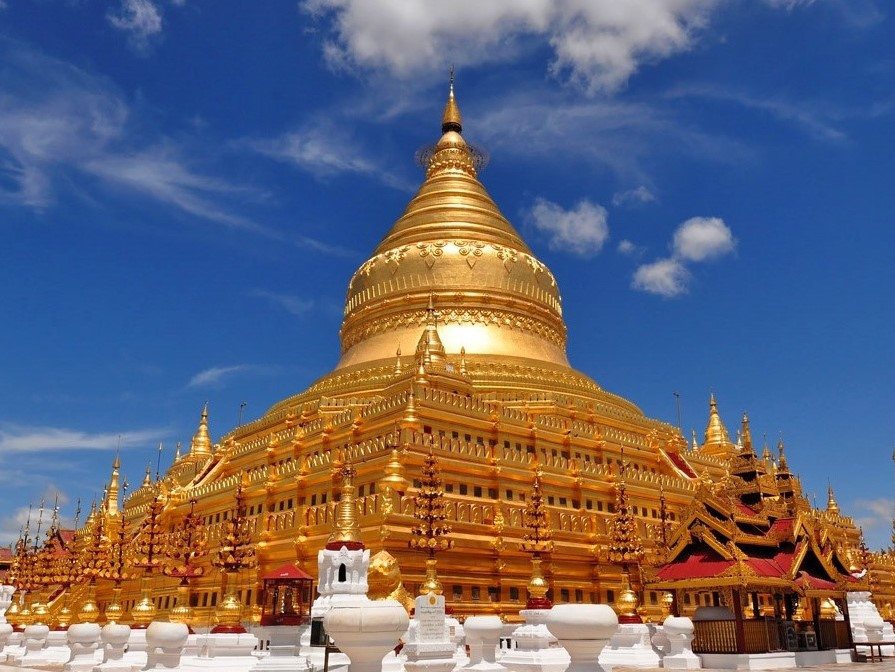
Shwezigone Pagoda is one of the oldest and most impressive monuments of Bagan. It is located in Nyaung U, a town near Bagan. King Anawrahta was began building but unfinished it. During the reign of King Kyansittha in Bagan, he completed it in 1087 A.D. A prototype of Burmese stupas, it consists of a circular gold leaf-gilded stupa surrounded by smaller temples and shrines. Most noticeable is the huge gold plated pagoda glimmering in the sun. The design of the Shwezigon Pagoda has been copied many times across Burma over the centuries.
DHAMMAYANGYI PAGODA
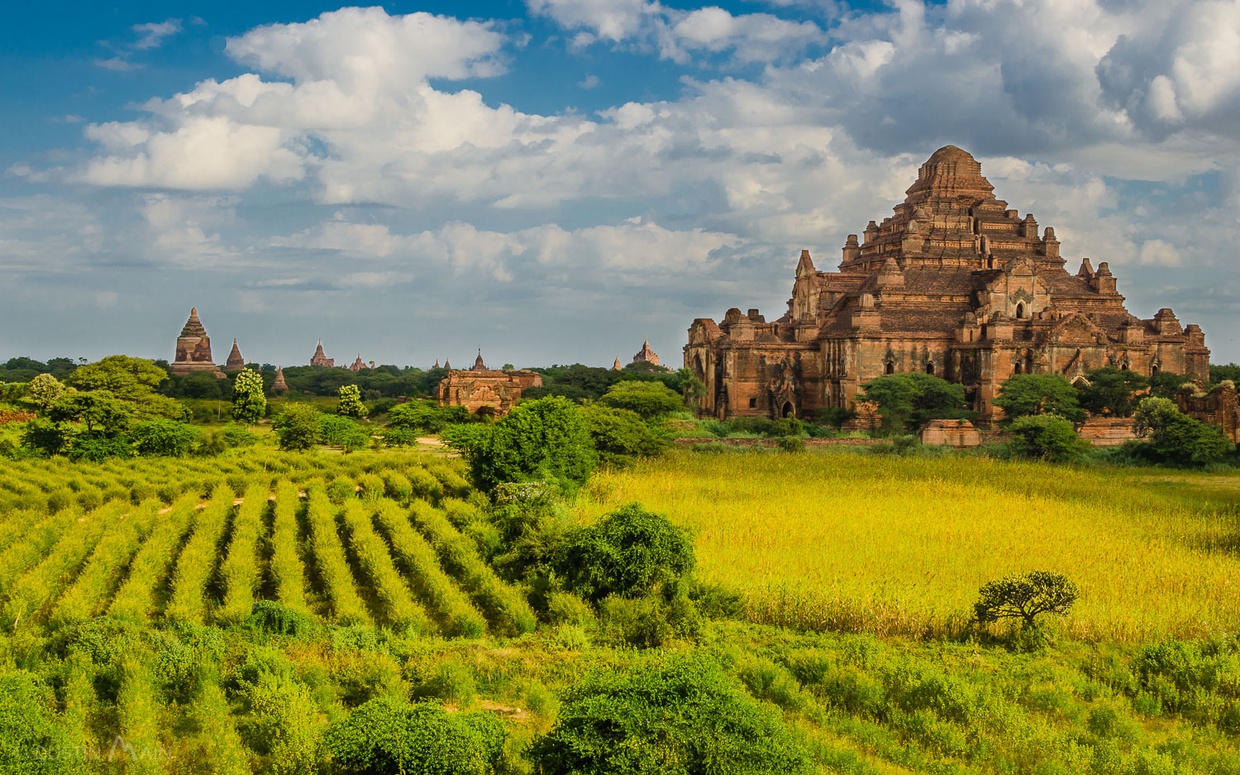
Dhammayangyi Temple is the largest temple on the plains of Bagan. Dhammayangi Temple shape like an Egyptian pyramid. The amazing feature of Dhammayangyi is the excellent technique of brick-laying. Only mud motor was used, the massive structure has remained several earthquakes because of best brick- laying technique. The temple is located about a kilometer to the southeast of the city walls directing Minnanthu. Dhammayangyi temple was built by King Narathu in 1170. There are four sides at Dhammayangyi Temple but only eastern side is open and it has a huge Buddha image in the niche. The other three sides were blocked.
THATBYINNYU TEMPLE
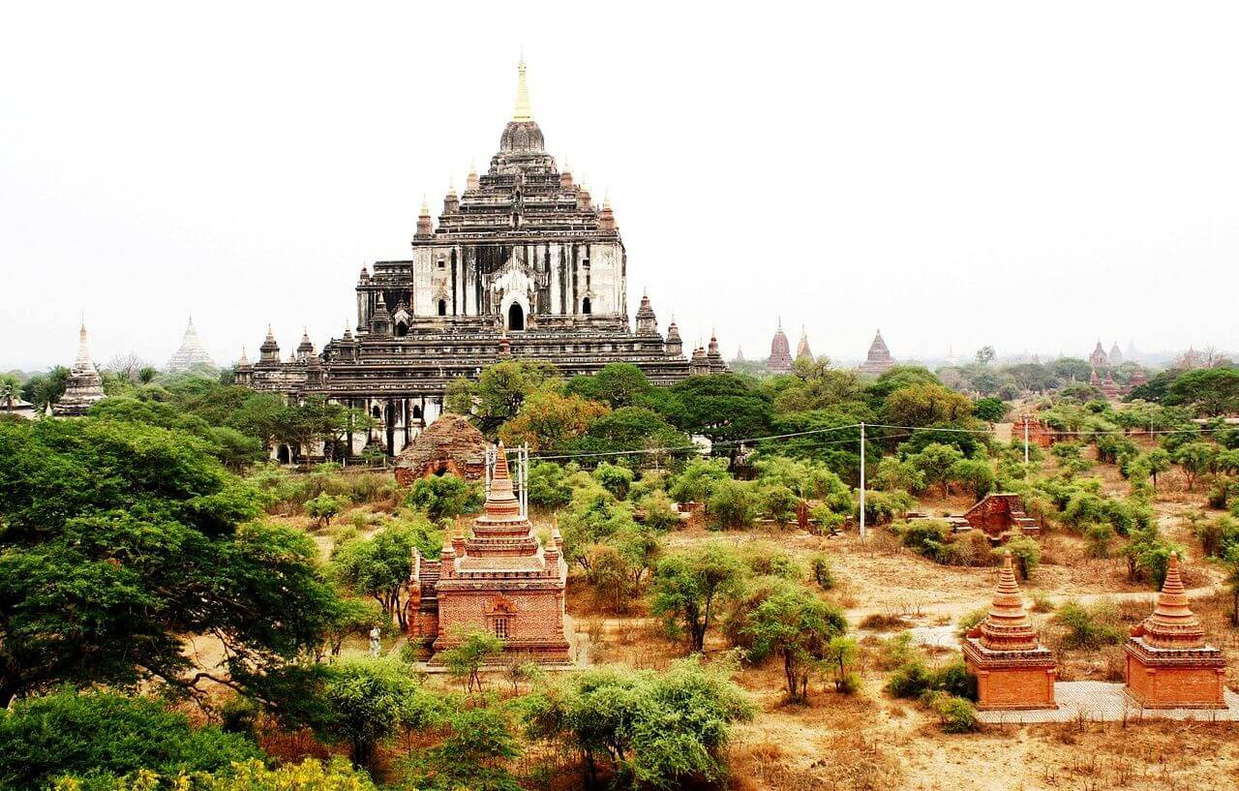
Thatbyinnyi Temple, Sabbannu or ‘the Omniscient’, is one of the highest monuments of Bagan. It is the tallest structure and like Dhammanyangyi Temple, the technique of brick lying was excellent. Thatbyinnyu is one of the first two storey structures built in Bagan. It is adjacent to Ananda Temple. Thatbyinnyu Temple is shaped like a cross, but is not symmetrical. With a height of just over 60 meters and it was built by King Alaungsithu. The majestic pagoda, towering above other nearby temples and pagodas is visible from much of the Bagan plains.
SULAMANI TEMPLE
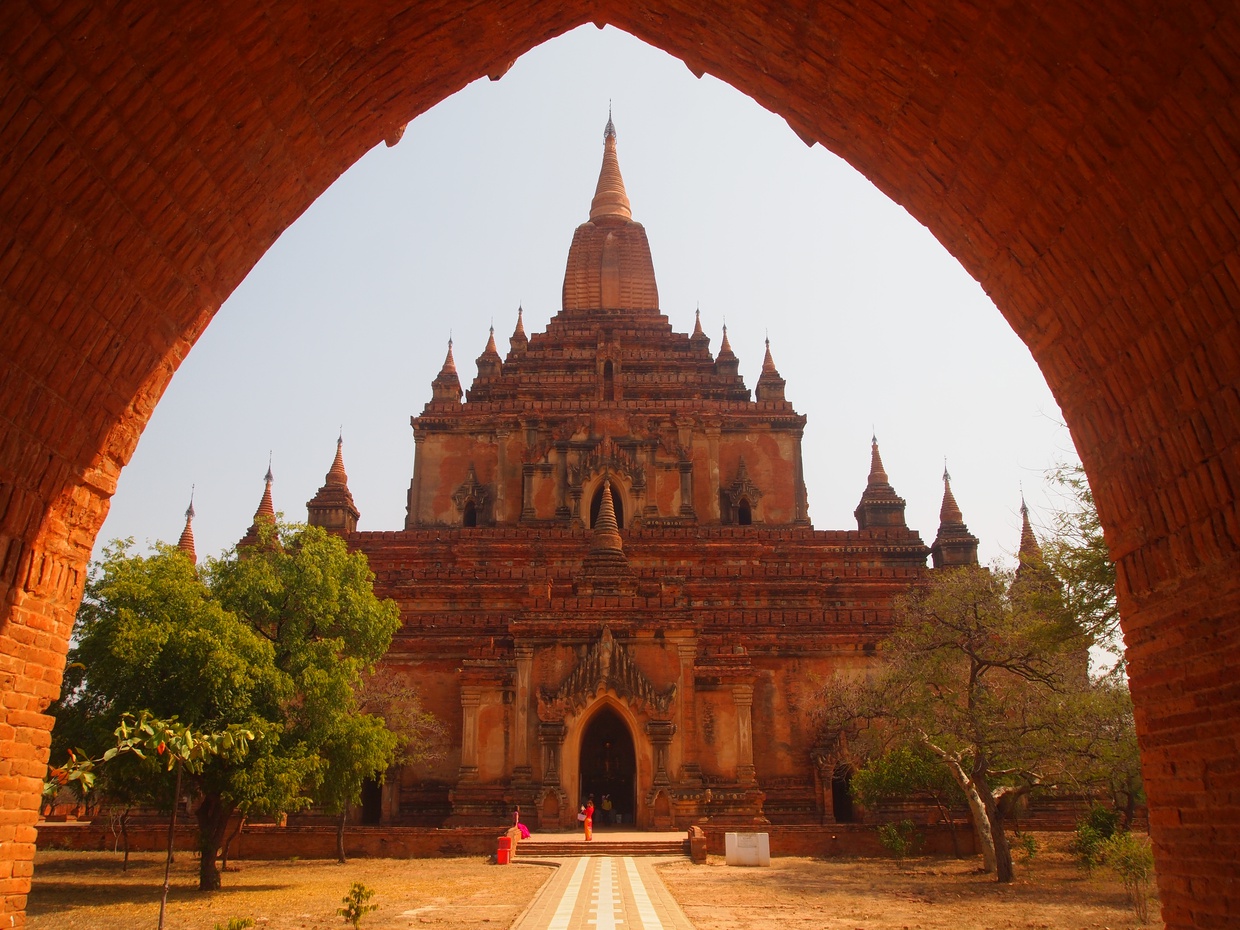
Sulamani Temple is one of Bagan’s most attractive temples, with lush grounds behind the surrounding walls. Sulamani Temple is located in the village of Minnanthu, in the center of Bagan. The temple was built by King Narapatisithu in 1183 AD. It is a cave pagoda and massive in Structure. Its entrance was decorated by superb architectural works of art. It is also one of the most-frequently visited in Bagan. This temple with five doorways is known as the Crowning Jewel or Small Ruby.
HTILOMINLO TEMPLE
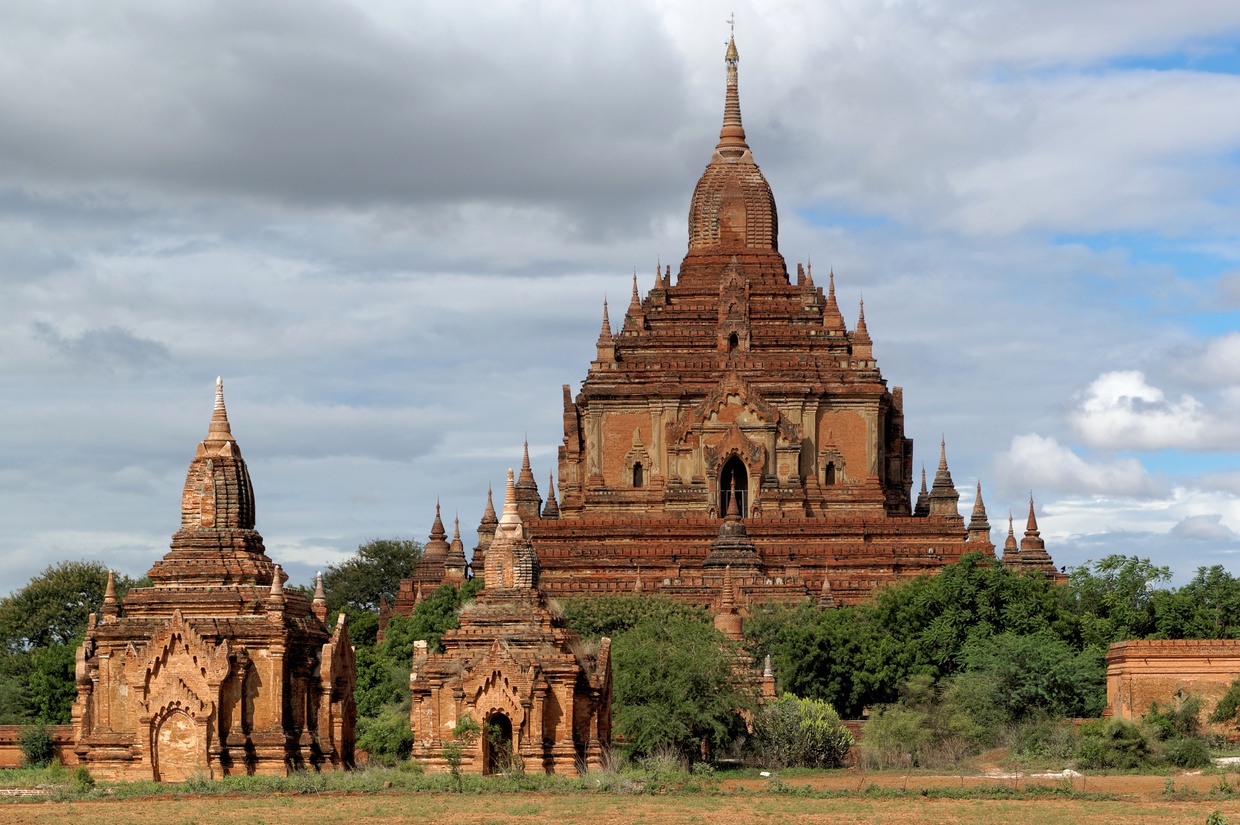
Htilominlo Temple is one of the biggest and most beautiful temples in Bagan, built by Nataung Mya King in the 13th century. They were built of red bricks and cement only. There are eight Buddha images, four on the ground and four on the upper storey. They face each direction. The upper vaulted corridor is flanked by two rows of niches enshrining stone artworks. It is a large majestic structure towering 46 meters high. It’s most impressive from the outside, with its terraced design, which is similar to Sulamani Temple. The temple is known to be the last Myanmar Style temple built in Bagan.
GUBYAUKGYI TEMPLE
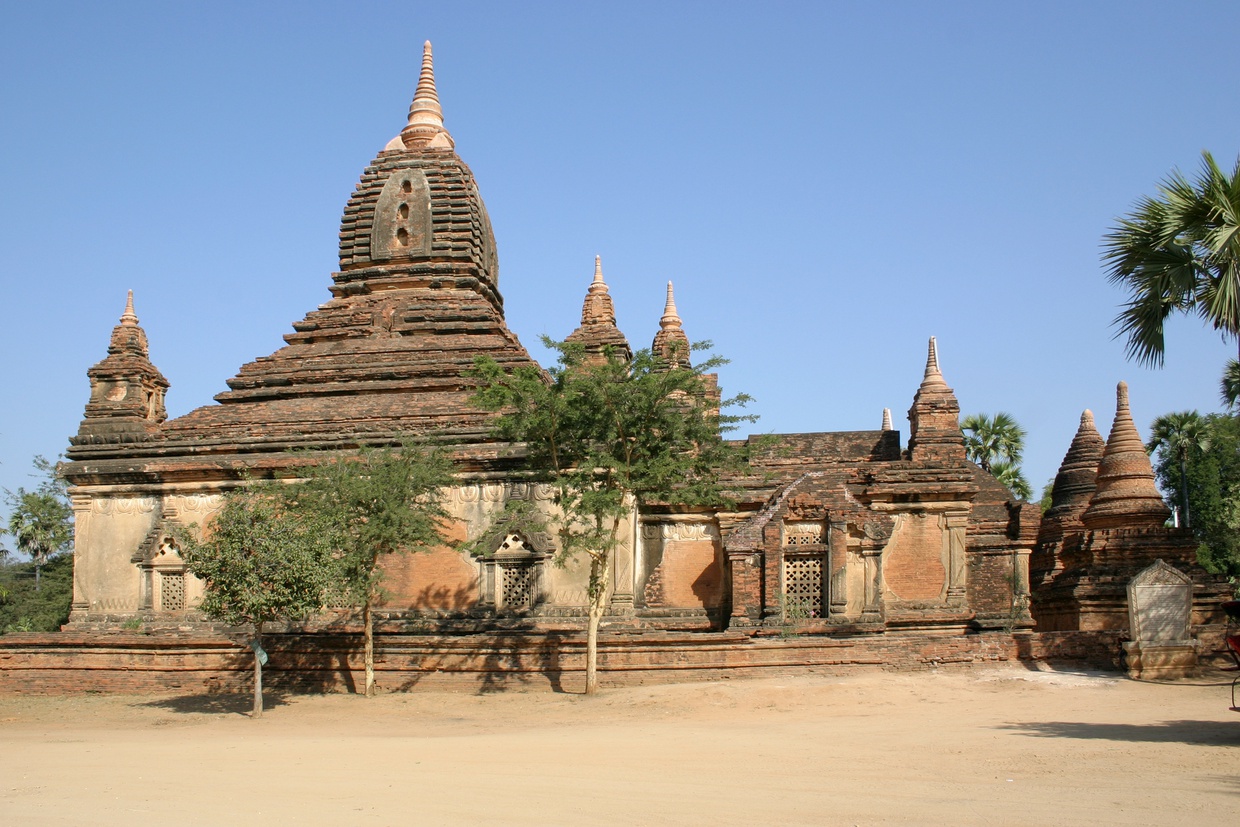
Gubyaukgyi (Great Painted Cave Temple), is famous for its beautiful mural paintings. It was built by Prince Rajakumar, son of Kyansittha in 113 A.D and situated in the north of Myinkaba Village. Mixed with Indian and Mon Style influence. There are 550 jatakas on Buddha’s daily life, one of the main attractions of this temple.
LAWKANANDA PAGODA
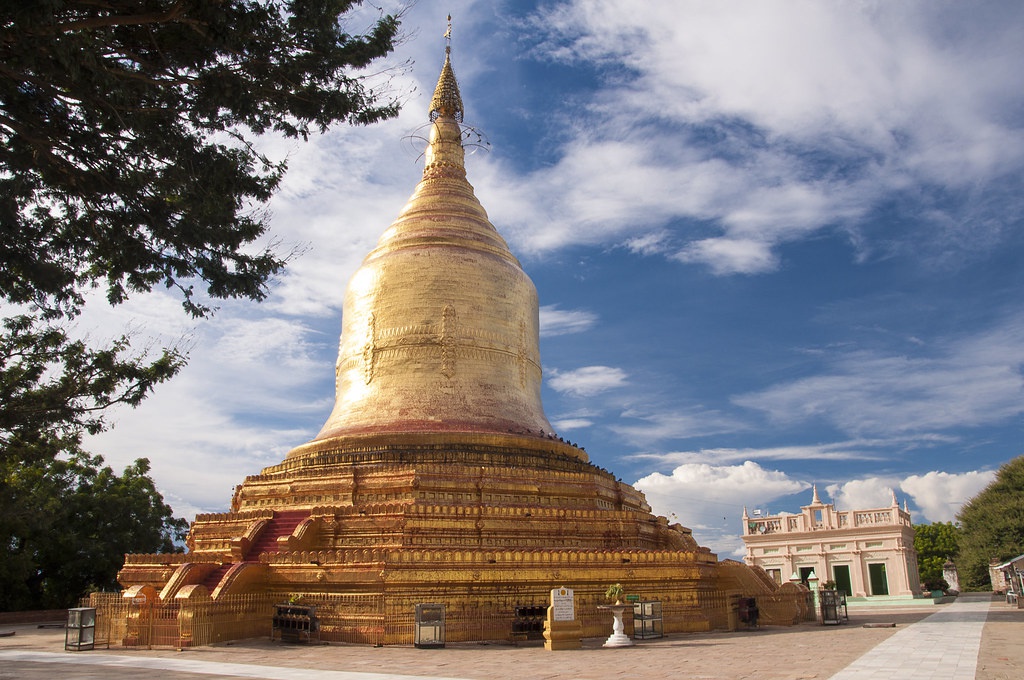
Lawkananda Pagoda is a beautiful golden Pagoda on top of a small hill on the banks of the Irrawaddy River. It was built in 1059 by King Anawrahta, founder of the Bagan Empire. It enshrines a replica of a tooth relic of the Gautama Buddha that the King obtained from Sri Lanka. The Pagoda located a few kilometers south of old Bagan marked the Southern boundary of Bagan’s Capital. There are lots of benches for wide-open views of the Irrawaddy River and breathtaking view of the sunset from the pagoda is not to be missed.
THARABA GATE
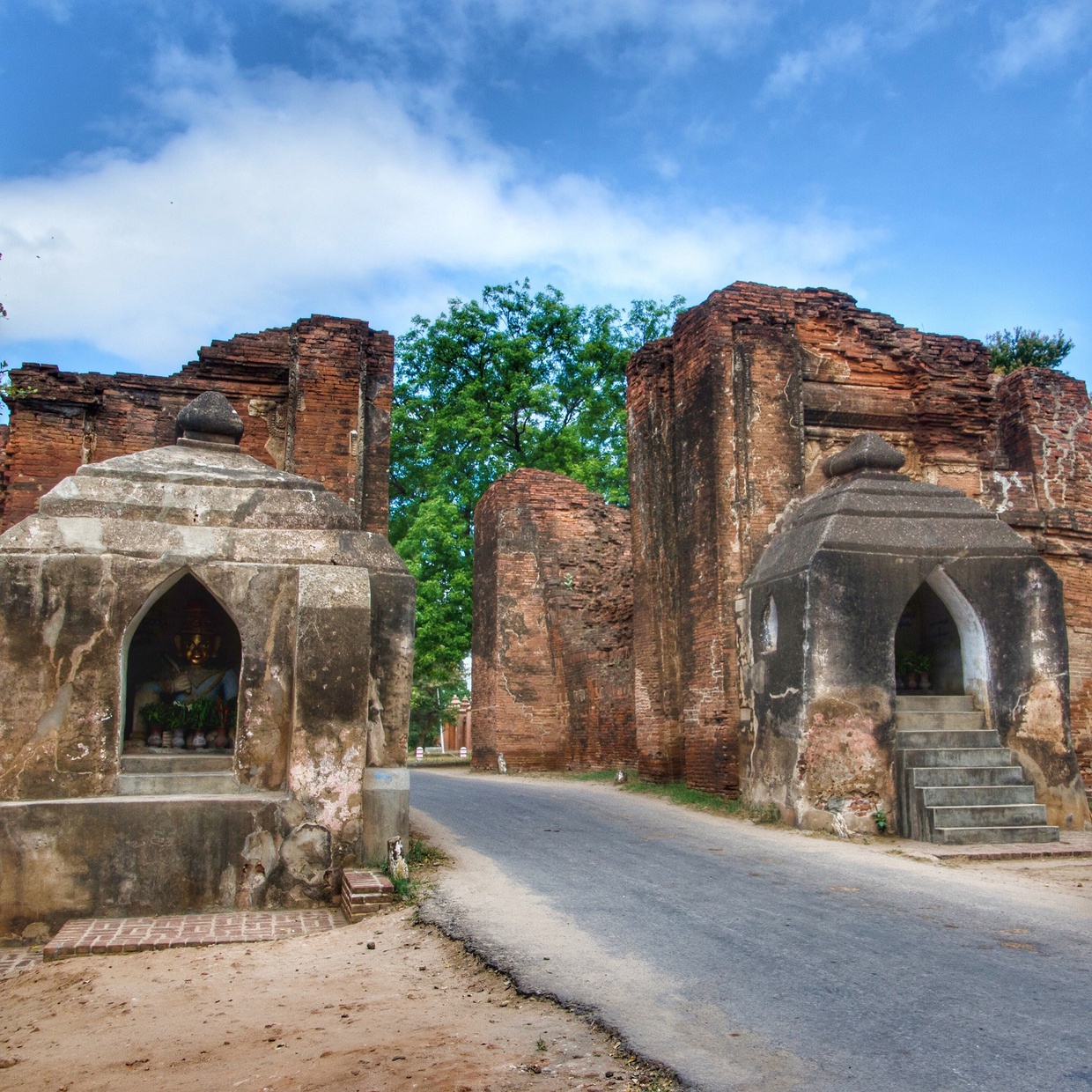
Tharaba Gate is the main gate of the east wall and the only structure left of the old city built by King Pyinbya. It was built in 849 A.D during the 9th century. The gate consists of two brick-walled shrines, each opposing one another, of two guardian nats, named Min Mahagiri and Hnamadawgyi (Shwemyethna), who allegedly were executed by order of king. The gate is interesting because it is the only piece of secular
BU PAYA
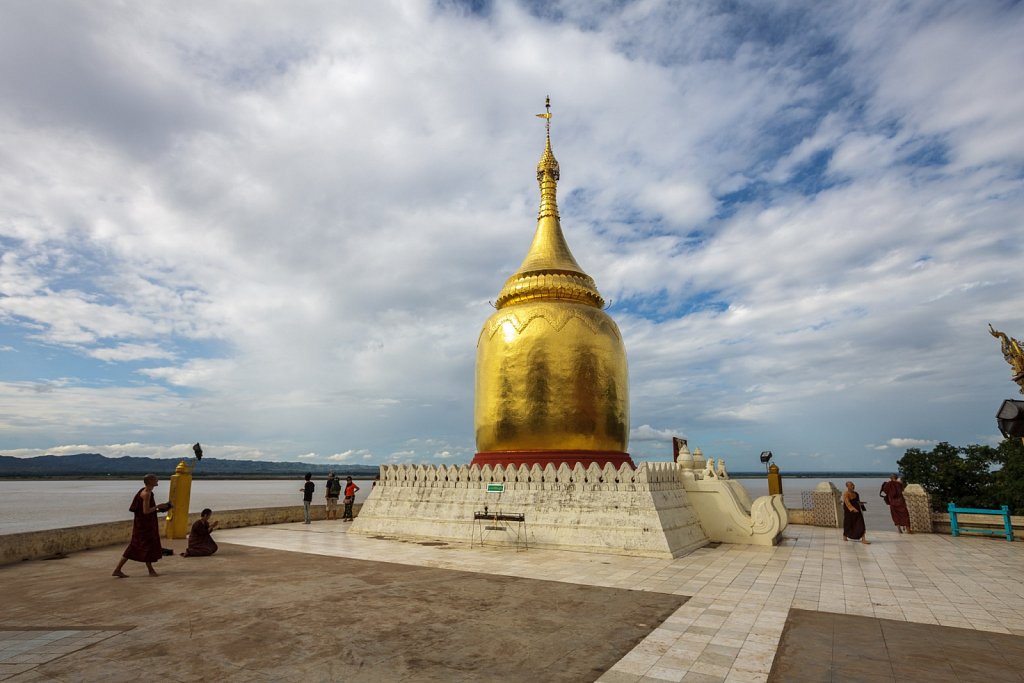
Bupaya is a notable pagoda, one of the earliest monuments on the Bagan plains. Although not one of Bagan’s most impressive monuments, Bupaya pagoda is an attractive monument because of its age and its location at a bend on the right bank of the Irrawaddy River. It was built by the third King of Bagan, Pyusawhti who ruled from 168 to 243 AD. Bupaya is the small pagoda which has a bulbous shape dome, named for bu (gourd) and the gilded pagoda is built in Pyu-style. The view from the river is also a breath-taking one. You can also hire a boat and take a ride in the Irrawaddy River to get a better view of the pagoda.
MANUHA TEMPLE
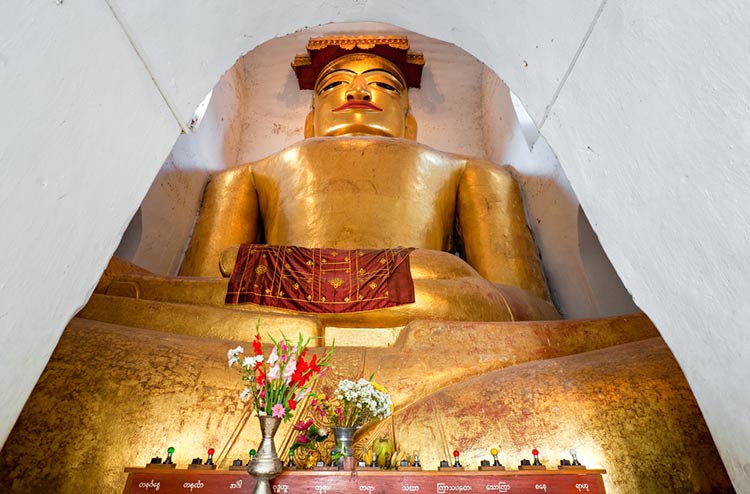
Manuha Temple is one of the oldest temples of Bagan. It is named after Manuha, the Mon King from Thaton. Manuha built the temple in 1067. Manuha Temple is a rectangular building of two storeys. The building contains three images of seated Buddhas and an image of Buddha entering Nirvana. The sacred Buddha’s relics were enshrined in the image.
PYATHETGYI TEMPLE
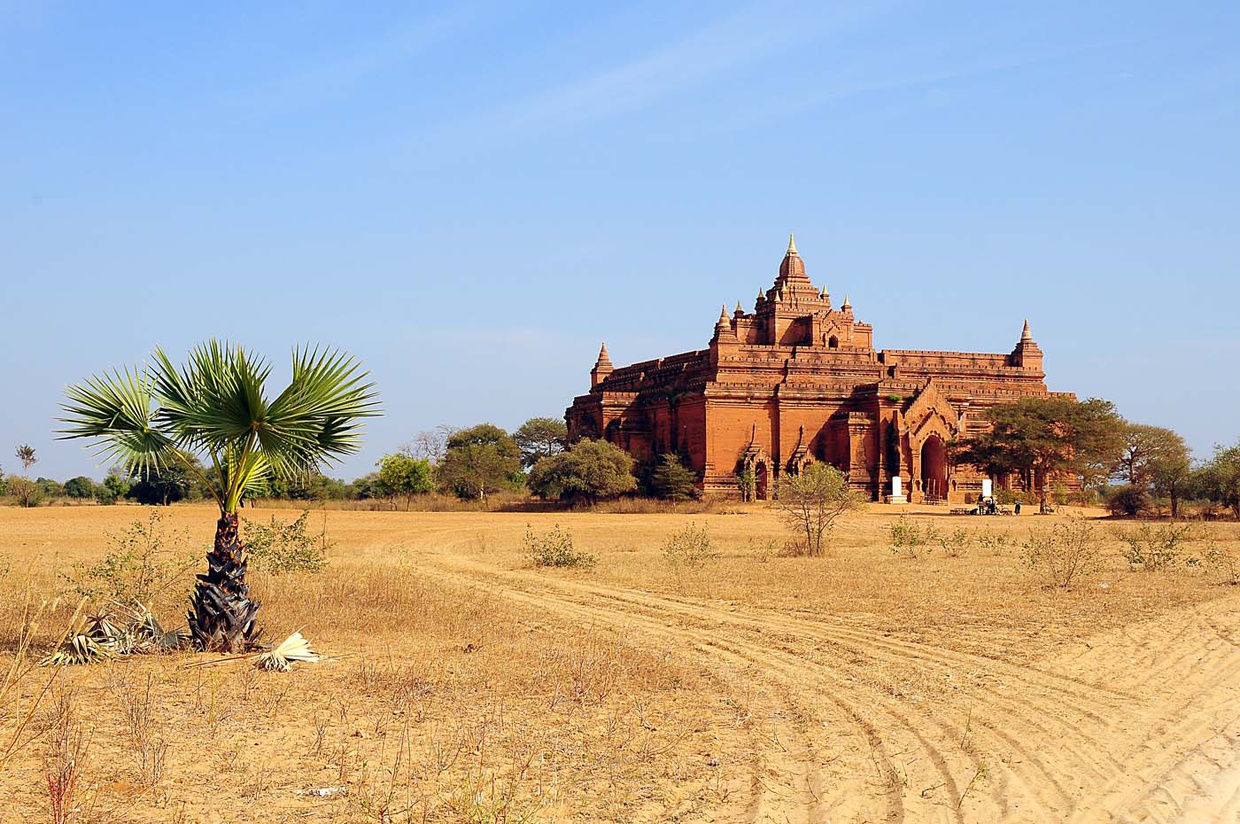
Pyathetgyi Temple is a very large, impressive brick temple located South East of old Bagan. It was built in the first half of the 13th century by King Kyaswa, a devout Buddhist. Pyathetgyi Temple is a double-cave type monument. Most of these kinds of monasteries were built out of wood. But some were built out of bricks and testify to the power of these monasteries.
SHWESANDAW PAGODA
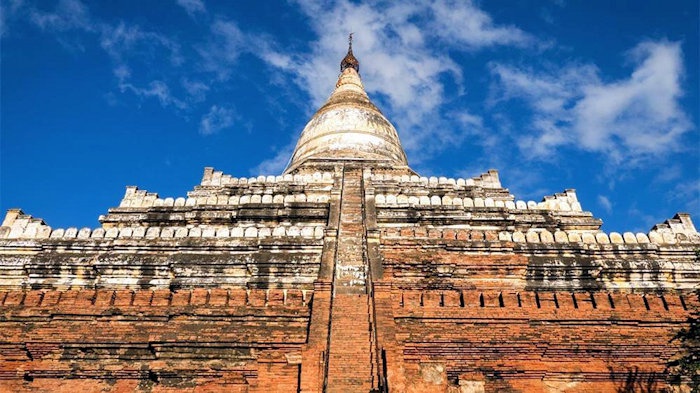
Shwesandaw Pagoda is one of the taller Pagodas in Bagan, an imposing structure visible from far away rising from the plains of Bagan with its height of 328 feet. Shwesandaw Pagoda built by King Anawrahta after his conquest of Thaton in 1057. Shwesandaw Pagoda has five terraces. On the topmost terrace rises a bell-shaped Stupa. All four sides have each a stairway leading right up to the fifth terrace. Enshrined within the pagoda are sacred hairs of Gautama Buddha.
NANN MYINT TOWER
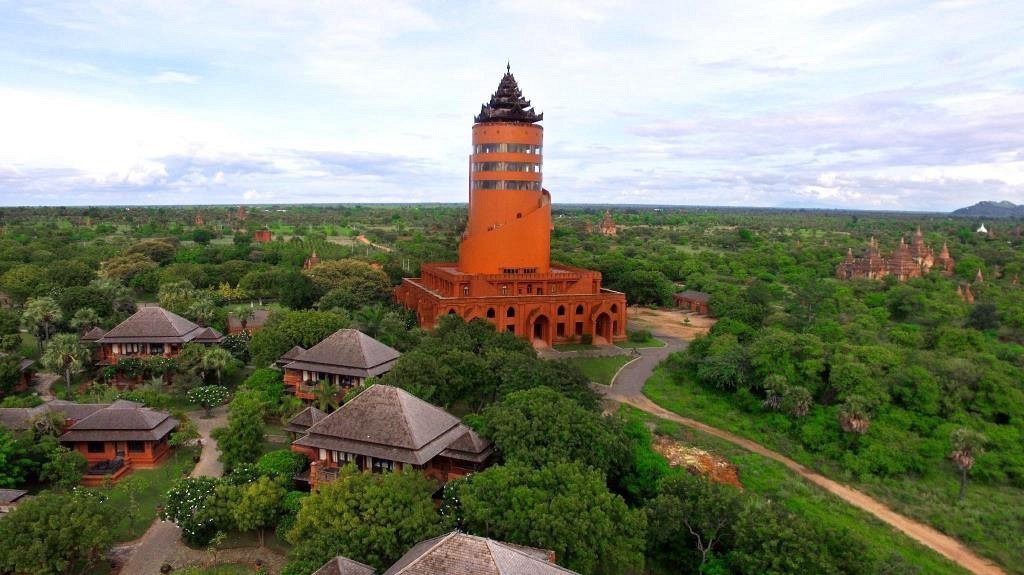
Nann Myint or the Bagan Tower has been open to public since April 2005. The tower is located at the eastern part of Bagan archeological site. Nann Myint means ‘The high palace’ in Myanmar. Nann Myint viewing tower is the ideal one stop viewpoint for visitors to Bagan to see the wonders of over 2000 ancient architectural temples and monuments of the 11th to 13th century. The tower has a height of 60 meters. The tower has a total of 13 levels. At the first floor, there is a small galleria with souvenir shop, the first 2 levels are meeting rooms, from level 5 to 7 are the offices rooms, from level 11 to 13 are the viewing rooms. There are also restaurants at the top levels. Visitors can enjoy the panoramic views of Bagan from the Nann Myint Tower.
MT.POPA
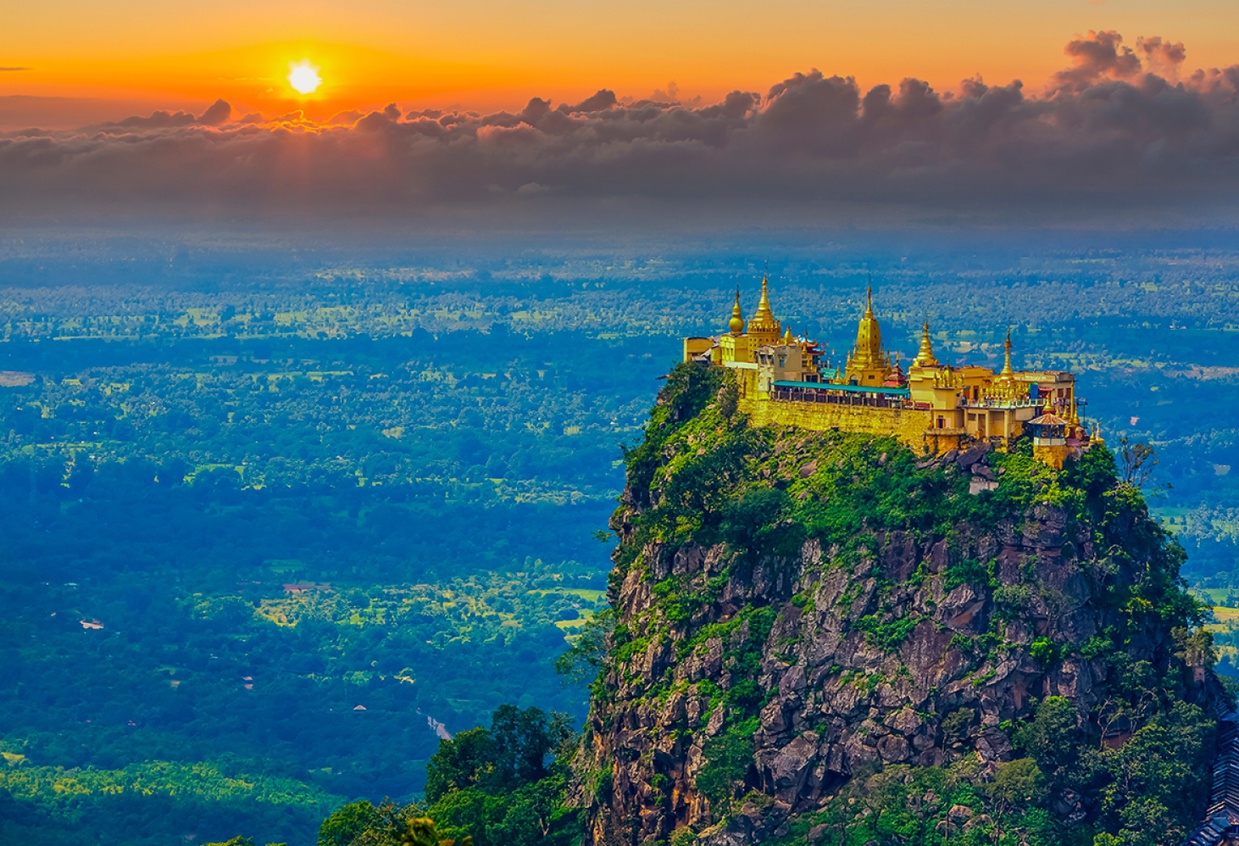
Mount Popa is an extinct volcano 1518 meters (4981 feet) above sea level and located in Central Myanmar in the region of Mandalay about 50 km southeast of Bagan, well-known as the oasis of the central Myanmar dry zone. Mount popa is the spiritual headquarter to Myanmar’s ‘37 Mahagiri Nats (spirits)’ and thus the most popular location in the country for nat worship. To reach the top, there are 777 steps to the summit. You need to take off your shoes and socks to climb on top. Along the way, there are many monkeys expecting treats. From Mt.Popa can see the panoramic views of the surrounding plains of Bagan. Twice yearly, thousands of people will gather here to attend the nats festival to honour these spirits. It can be done day return trip from Bagan. Anyhow, staying in Popa Mountain Resort is unforgettable.
SALAY
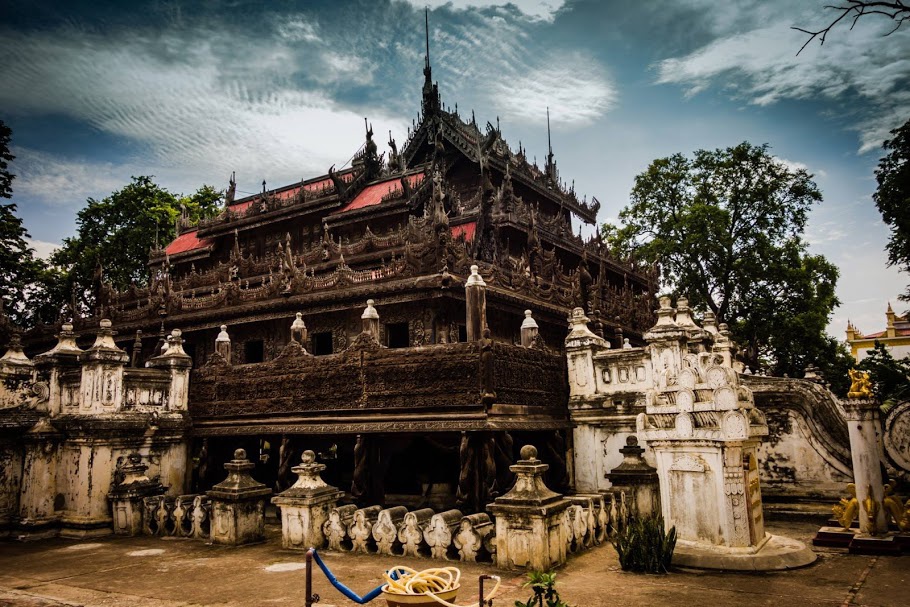
Salay is a colorful old religious center and it is about 1 ½ hours south of Bagan. Salay is also on Irrawaddy River. In Salay, there are ancient monasteries, beautiful woodcarving, and beauty of this compact city of colonial buildings, monasteries and pagodas.Visit the famous monastery "Yoke-Sone Monastery'' which is a cultural heritage site in Salay, which in situated on the eastern bank of the Ayeyarwaddy River. It is famous with its spectacular woodcarvings and also it is the native town of the famous writer Salay U Pone Nya during the time of the Myanmar Kings.
CHIN STATE - KANPETLET | MOUNT VICTORIA | MINDAT
Chin State is an administrative state located in Western Myanmar. Southern Part of Chin State can be easy access from Bagan. The State is a mountainous region with few transportation links. Chin State is sparsely populated and remains one of the least developed areas of the country. The Chin are made up of many sub-groups which although historically related now speak divergent languages and have different cultural and historical identities. Living in the wild but embracing friendly smiles, Chins are one of the warmest people to come across.
KANPETLET
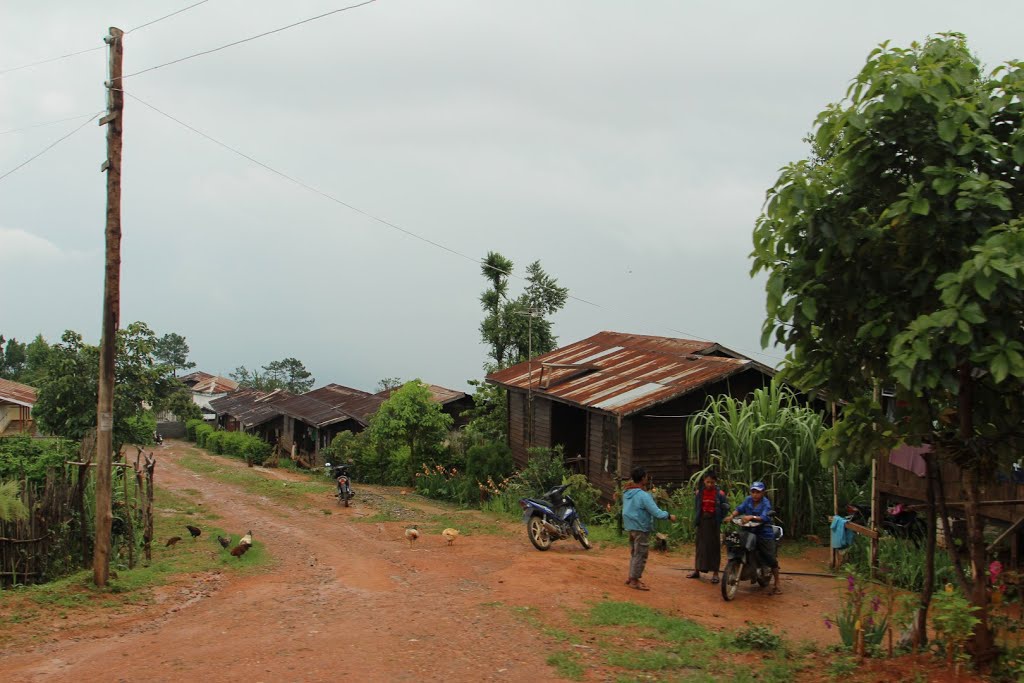
Kanpetlet is a small town in the Chin State of West Myanmar with a population of a few thousands and situates about 1,370 meters above sea level. It is 80 kilometers away from Mindat and one of the two gateways to climb the Mt.Victoria. It is known for Mt. Victoria, the highest peak in the Chin Hills and one of the highest in Western Myanmar and Natmataung National Park, home of some of the world’s rarest bird species.
MOUNT VICTORIA
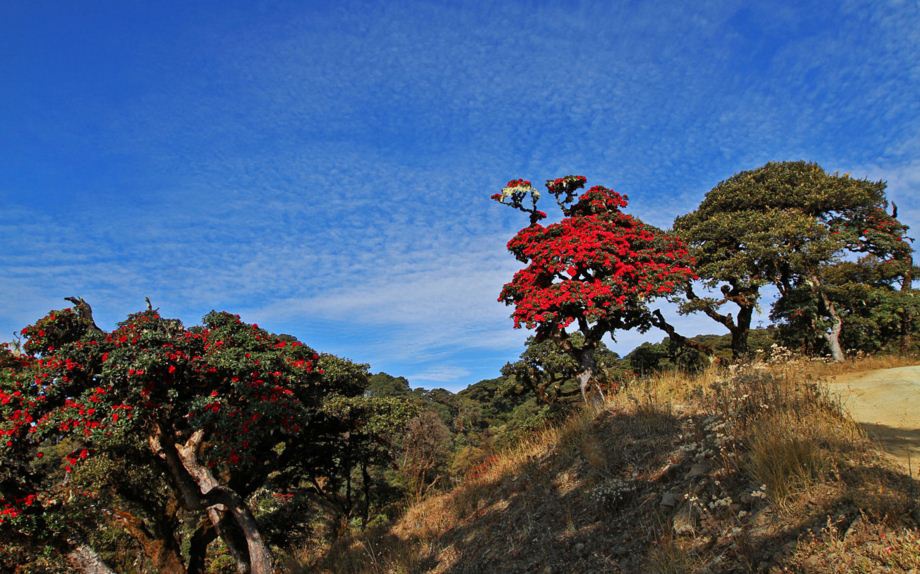
Mt. Victoria is the highest mountain and located in Chin State. It is home to a variety of rare and beautiful flora and fauna and ethnic tribes known for their tattoo-faced women folk. Mt. Victoria is one of the best places in South East Asia to learn about rare flower species. This mountain high 10,016 ft (3053m). November is the best time to visit to Mt. Victoria because the rhododendron bushes that covers the slopes in full bloom in November.
MINDAT
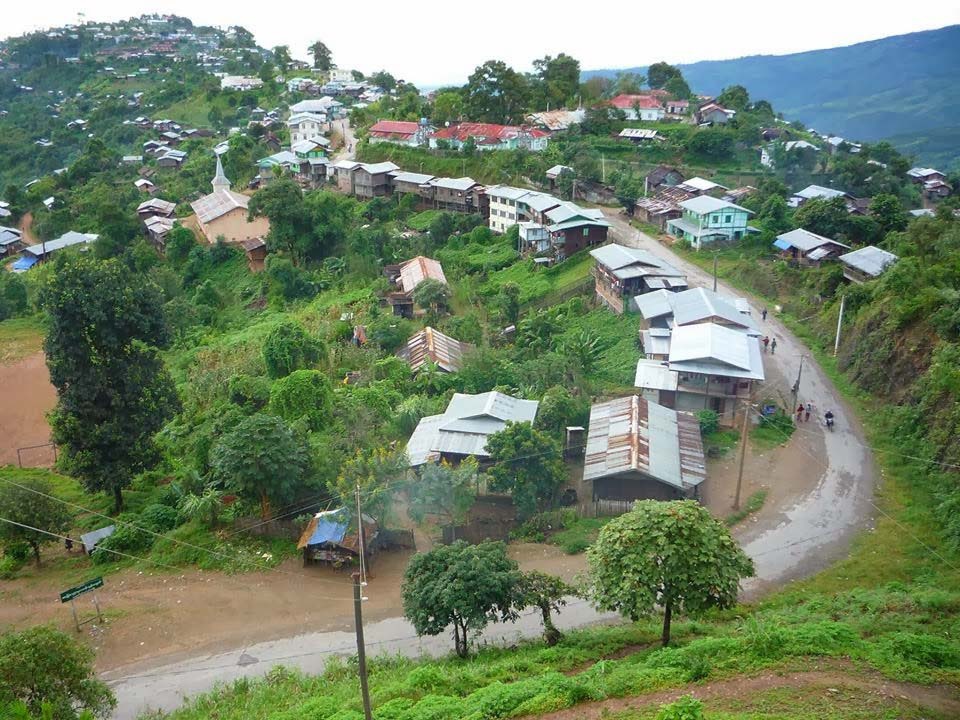
Mindat is a small town in the Chin State of Western Myanmar. The weather there is normally from cool to cold and misty. If the weather is clear, one can see the peak of Mt. Victoria from there. It is one of the gateways for the trekkers to trek to the peak of Mt. Victoria. You may enjoy trekking adventure around Mindat and its environs in Chin State; not only to climb a high mountain, but also to visit an area where people are still in tune with nature and tradition, the women with a face full of tattoos which is a sign of beauty.






Share This Page